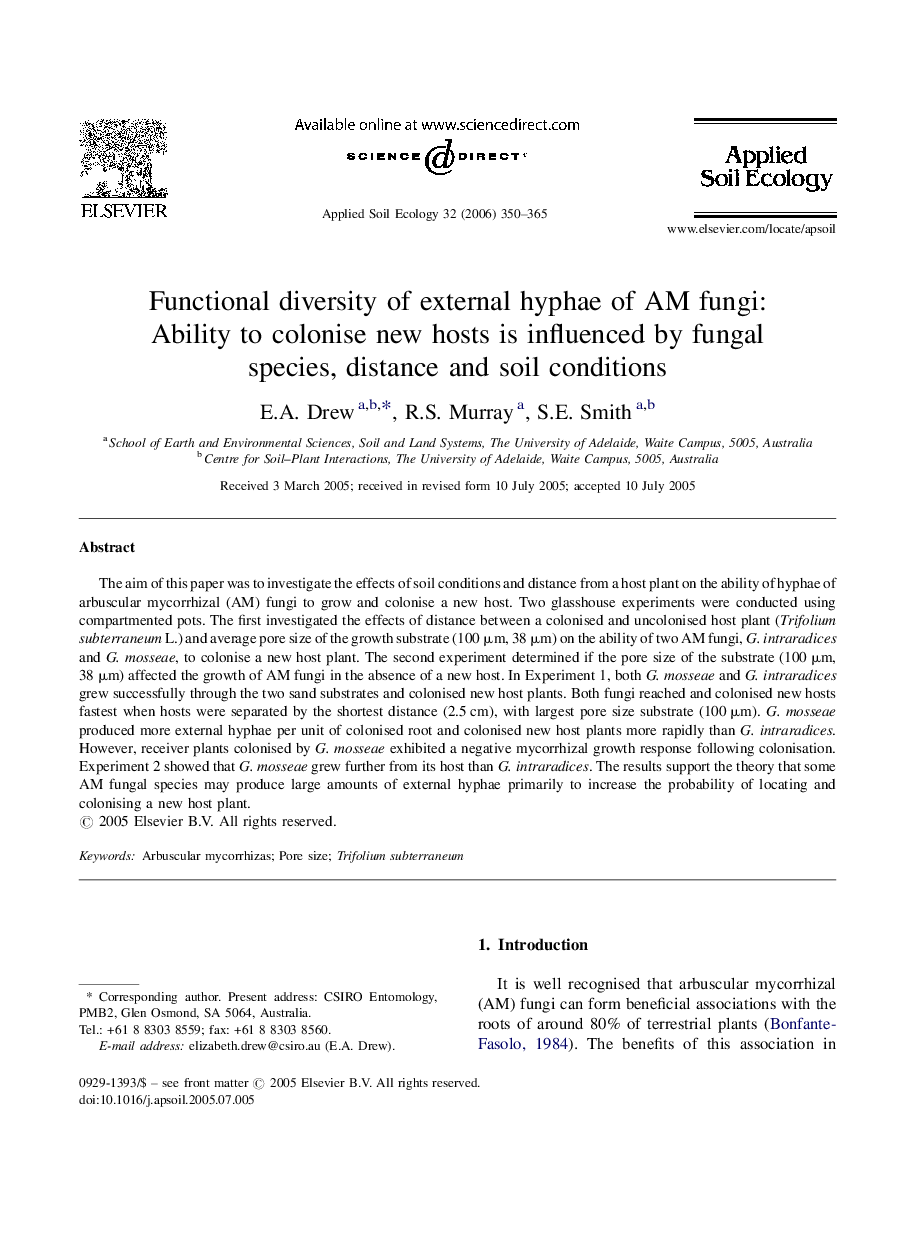| Article ID | Journal | Published Year | Pages | File Type |
|---|---|---|---|---|
| 4383564 | Applied Soil Ecology | 2006 | 16 Pages |
The aim of this paper was to investigate the effects of soil conditions and distance from a host plant on the ability of hyphae of arbuscular mycorrhizal (AM) fungi to grow and colonise a new host. Two glasshouse experiments were conducted using compartmented pots. The first investigated the effects of distance between a colonised and uncolonised host plant (Trifolium subterraneum L.) and average pore size of the growth substrate (100 μm, 38 μm) on the ability of two AM fungi, G. intraradices and G. mosseae, to colonise a new host plant. The second experiment determined if the pore size of the substrate (100 μm, 38 μm) affected the growth of AM fungi in the absence of a new host. In Experiment 1, both G. mosseae and G. intraradices grew successfully through the two sand substrates and colonised new host plants. Both fungi reached and colonised new hosts fastest when hosts were separated by the shortest distance (2.5 cm), with largest pore size substrate (100 μm). G. mosseae produced more external hyphae per unit of colonised root and colonised new host plants more rapidly than G. intraradices. However, receiver plants colonised by G. mosseae exhibited a negative mycorrhizal growth response following colonisation. Experiment 2 showed that G. mosseae grew further from its host than G. intraradices. The results support the theory that some AM fungal species may produce large amounts of external hyphae primarily to increase the probability of locating and colonising a new host plant.
